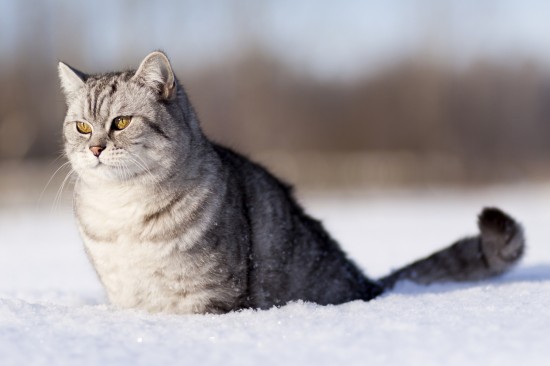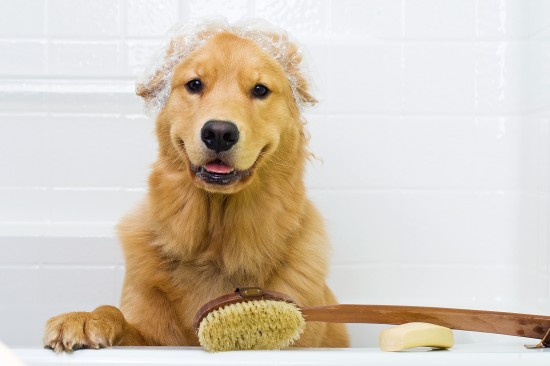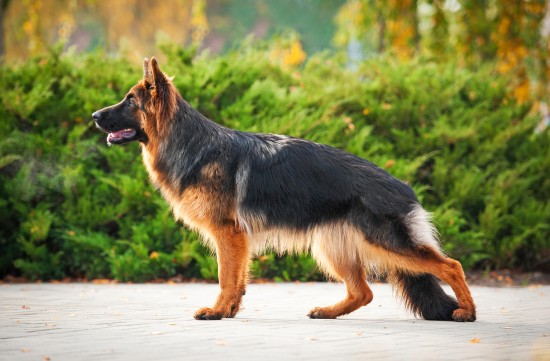

All pet owners know that many of the products that we commonly use during the winter to battle against ice and snow can be harmful to the health of pets like cats and dogs, and that we should avoid using them if possible. Antifreeze and de-icer sprays and solutions are not only highly toxic to cats and dogs, but also sweet tasting and potentially palatable to pets, and can be very dangerous. Similarly, products designed to provide traction on icy roads and pavements may contain solvents to prevent freezing or dissolve the ice too, which your pet may then later lick off their paws and ingest.
However, few of us can afford to let our lives grind to a halt during the winter months, or have the luxury of being able to wait out the frozen weather! So, if you want to keep your pets safe but you also need to be able to manage through the ice and snow, what products can you use around your pets without harming them? Read on to find out more!
Commercial products that are used to grit roads and pavements are usually comprised of more than just grit- they also contain solvents to dissolve ice and prevent freezing as well. These should be avoided as they can be toxic if your pet licks them off their paws and ingests them, but there are various other options available to you to use to de-ice and provide traction on driveways and paths instead, which do not contain solvents.
Products such as sand, builder’s gravel, crushed shells for pathways and even grit-based cat litter can all be used to provide grip on surfaces that would otherwise be slippery, and can be put down either before or after it gets icy or snows.
Added to this, you can buy studs or chains to slip over your shoes or boots, to provide grip without chemicals on frozen ground too.
If you know that a particular area such as a pathway or steps will freeze over quickly and become dangerous to walk on, you can get a head start by doing what you can to prevent them from freezing over in the first place. First of all, try to keep them dry so that there is less available moisture in the area to freeze over at all, and see what you can do about covering them over or providing pathways through frozen or snowy areas. Tarpaulins, planks of wood and plastic sheeting can all potentially guard against frost and ice, and provide a safe walkway when the rest of the ground is frozen.
If the windscreen of your car is frozen solid or there are sheets of ice around your walkways that you need to dissolve to get where you are going, finding a pet-safe way to deal with these can be a challenge.
Chemical de-icers should be avoided as much as possible, and one alternative solution to this is to buy in some bags of coarse salt such as rock salt. While ingesting salt or rock salt is harmful to pets and should not be encouraged, it is the lesser of two evils when compared to chemical products that are invariably highly toxic, and used sparingly and with care, should be safe to use around pets such as cats and dogs.
You can also of course defrost ice and melt snow using hot water, such as by tipping a kettle of hot water over the windscreen of your car or frozen locks. However, don’t forget that even hot water will freeze once it is cold, so by doing this, you might simply be storing up more problems for yourself further along the line!
Even if you are extremely careful about the products that you use on your own property and plan with your pet’s safety in mind, the chances are that they are likely to come into contact with solvent grit or de-icing chemicals when out and about on walks or looking around the neighbourhood.
You should take steps, therefore, to minimise the effects of chemicals on your pet’s paws and skin, and try to ensure that they are exposed to them as little as possible.
When you come back from a walk with your dog, rinse their paws off in clean warm water and dry them thoroughly, taking the opportunity to check the paws for cuts, cracks and damage while you are there.
You can also help to protect your dog’s paws against the cold and chemical solutions on the ground by buying them a set of waterproof booties, or dressing the pads of their paws with paw wax, which can also be used on cats as well.
 How To Keep Your Home Clean And Hygienic When You Own A Dog
How To Keep Your
How To Keep Your Home Clean And Hygienic When You Own A Dog
How To Keep Your
 Online pet shops will meet every demand of your pet!
Online pet shops will meet every demand of your pet!
Online pet shops will meet every demand of your pet!
Online pet shops will meet every demand of your pet!
 Eye Disorders Commonly Seen In Birds
Eye Disorders Com
Eye Disorders Commonly Seen In Birds
Eye Disorders Com
 8 Tips On How To Keep Your Cat Healthy Throughout Their Lives
8 Tips On How To
8 Tips On How To Keep Your Cat Healthy Throughout Their Lives
8 Tips On How To
 German Shepherd Average Longevity And Hereditary Health
German Shepherd A
German Shepherd Average Longevity And Hereditary Health
German Shepherd A
Copyright © 2005-2016 Pet Information All Rights Reserved
Contact us: www162date@outlook.com